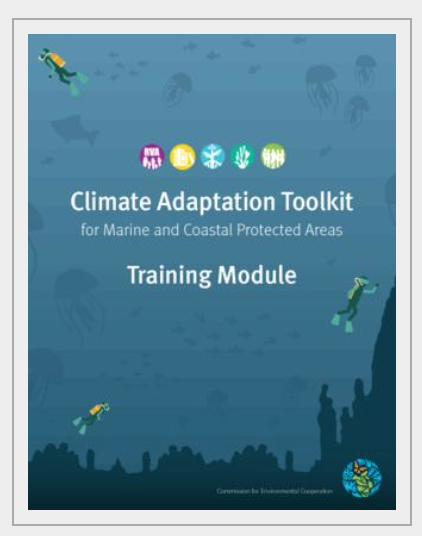Climate Adaptation Toolkit for Marine and Coastal Protected Areas

Posted by
Eric MielbrechtOverview
The Climate Adaptation Toolkit for Marine and Coastal Protected Areas was created to make climate adaptation planning a simple, direct, and feasible process for marine protected area managers. It contains tools that help protected area managers evaluate the vulnerability of their sites to climate change, identify appropriate adaptation strategies and learn about those strategies through case studies, reports and other resources.
What is in the Toolkit?
- A step-by-step guide to undertaking a Rapid Vulnerability Assessment for marine and coastal areas
- Structured and searchable adaptation strategy ideas with supporting case studies, reports and tools
- Foundational resources
- Selected experts who can be contacted for technical guidance
The Rapid Vulnerability Assessment Tool
The Rapid Vulnerability Assessment Tool was developed to make climate adaptation planning a simple, locally focused, and feasible process for marine protected area managers and to help them better understand habitat vulnerability to climate impacts and the potential for climate-informed management to reduce vulnerability. It guides managers through the climate vulnerability assessment process and contains a user guide, blank worksheets and examples of completed worksheets.
This approach should allow managers to focus on the effects of climate change on their issues of concern, such as habitat management, species conservation and ecosystem services. The tool is simple and accessible so that this analysis and planning can happen relatively quickly and with limited resources.
Adaptation Actions Table and Keywords Search Tools
Once a vulnerability assessment is completed, users can consult the Adaptation Actions Table tool, which includes adaptation actions and options specific to identified vulnerabilities, case studies that show how such actions have been put in place, selected scientific reports, technical guidance, and helpful tools. All of these components can serve as resources for marine and coastal protected area managers seeking adaptation ideas for known climate vulnerabilities. Users can view habitats and natural resources of interest and their possible vulnerabilities in the Adaptation Actions Table, or can search for specific keywords in the Adaptation Actions Search tool.
What You Need to Get Started
Don’t be daunted by the climate change adaptation planning process. You likely already have more expertise than you realize. Start small and with the information you already have, figure out where there are gaps in your knowledge, learn more and then expand as needed. The most important things are: an interest in learning how climate change is affecting the site being evaluated; knowledge of the site being evaluated (habitat types, basic ecological information, existing threats, management mechanisms, community needs); awareness of relevant climate impacts and access to basic climate information to support your understanding; and a day or two to devote to applying that interest, knowledge and awareness to the planning process using the rapid vulnerability assessment and adaptation actions tools.
Entry and Exit Points
Successful use of the Toolkit depends on understanding where in the climate change adaptation process you are, the kinds of resources contained in the Toolkit, and how far along the Toolkit can take you in your adaptation process. For example, the Toolkit can provide examples of case studies for useful adaptation strategies, but it is up to you to adapt these strategies to best suit your habitats, management context, and community needs, and then put them into action.

Climate Adaptation Toolkit Training Module
This document guides MPA practitioners through a basic climate adaptation planning process using the Climate Adaptation Toolkit.The Training Module provides a framework and training exercises to support the successful use of the Climate Adaptation Toolkit for adaptation planning in marine and coastal protected areas.

